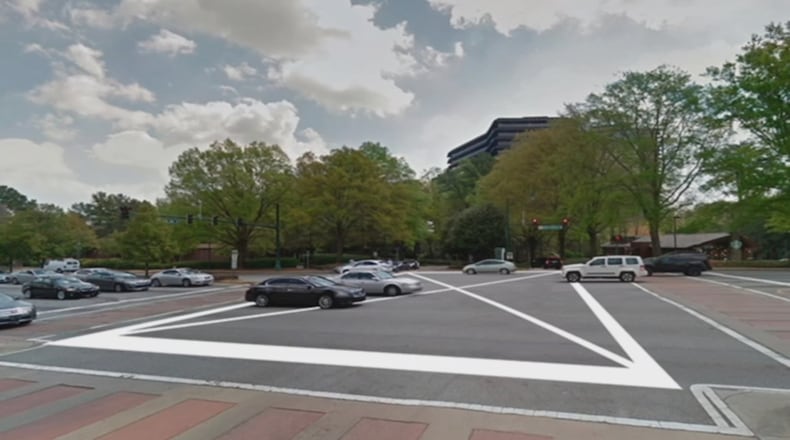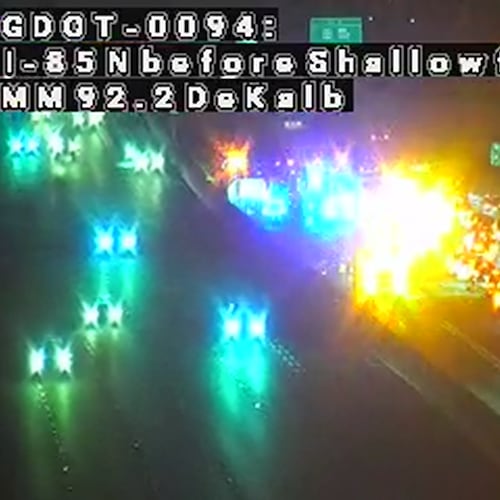This weekly column has never gotten an email response like the one last week on syncing and fixing traffic lights.That has long been a hot button issue in the Atlanta transportation ranks, and many respondents wrote with their own observations of both that problem and others. One, in particular, stood out. AJC reader Dan wrote in about traffic that blocks intersections when laws change.
“Those hundreds of inconsiderate idiots in every metro Atlanta community, who pull into an intersection when the intersection has not cleared and there’s not enough room for their own vehicle to pull up behind to the last automobile that actually cleared the intersection!” That is the terminology he used to call out the common traffic problem deemed “blocking the box.”
Sometimes blocking in an intersection just happens. Traffic looks like it is about to move, a vehicle pulls forward to make the light, traffic stops, the vehicle is in the middle of the intersection. That driver may have misjudged the flow or something unexpected happened, which does not necessarily make them an inconsiderate idiot. But at the same time, many people inconsiderately pull out into an intersection not having a clue or caring if they will get to the other side before the light changes.
Dan wanted to know what the law actually said about blocking intersections. State code 40-6-205 does offer a cut and dry rule of thumb: “No driver shall enter an intersection unless there is sufficient space on the other side of the intersection to accommodate the vehicle he is operating without obstructing the passage of other vehicles or pedestrians, notwithstanding any traffic-control signal indication to proceed.”
The Georgia Driving Manual makes this even more clear: “At intersections with traffic control lights, wait until the intersection is clear of traffic or approaching traffic before entering. Do not proceed ‘just because’ you have the green light.”
Think about how we treat green lights when we turn left, but oncoming traffic also has a green light. We don’t just steer into the cars when the light turns. That green signal means that we are allowed to turn when traffic allows. That is how we should operate when we are driving straight through an intersection, while roads are congested. The law is clear that space for our vehicles has to exist on the other side of the intersection, before we should cross.
Violating this law can result in three points added to a driver’s record. 15 points added in a 24-month period suspends a license. And the Atlanta municipal court lists the fine for obstructing an intersection at just under $200, but fines can vary by district.
Enforcement is a big issue. Dozens of cars can violate the law in a short period at each intersection, so pulling each person over equally and fairly is almost impossible. There is a similar difficulty in enforcing distracted driving laws, though intersection violations are far more obvious.
Local governments have taken a stab at this problem with simple signage and street paint. Some major intersections have a giant, painted X, connecting all four corners, to signify that stopping in that space is forbidden. They also have erected signs saying the same thing. These are relatively cheap ways to educate people, but speed limits are also on signs and we violate those constantly.
The best way to fix this problem is to simply obey the laws and drive with more consideration. We should vow to spread the light by clearing the light — or waiting for space before we crossover.
About the Author
The Latest
Featured

